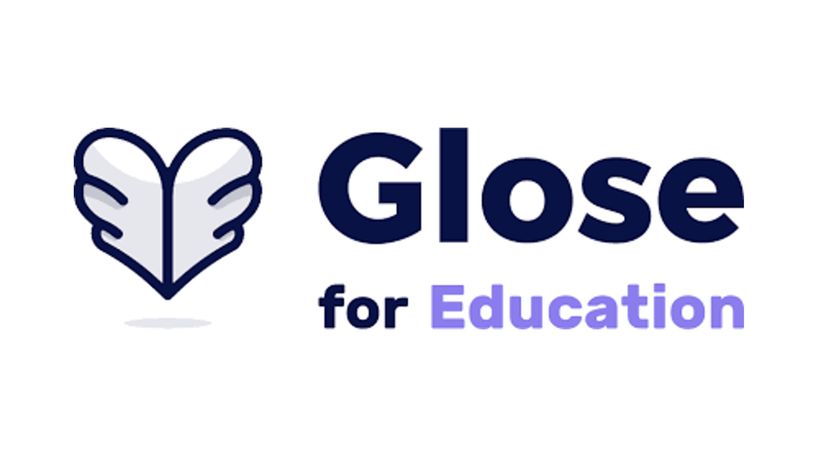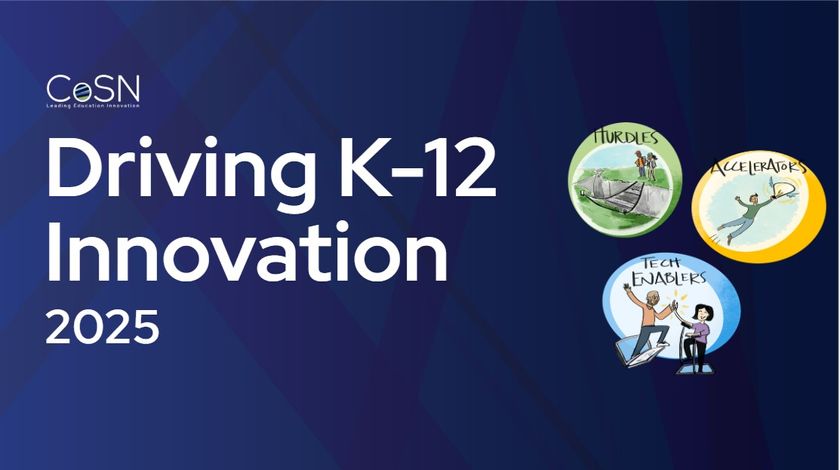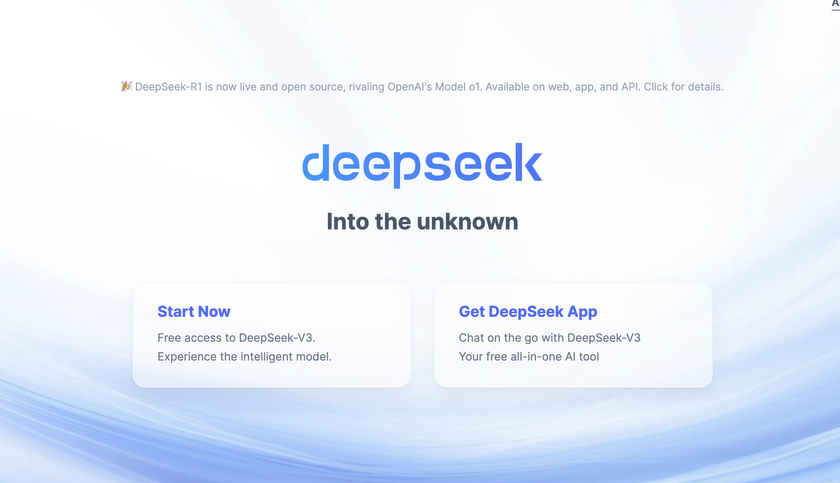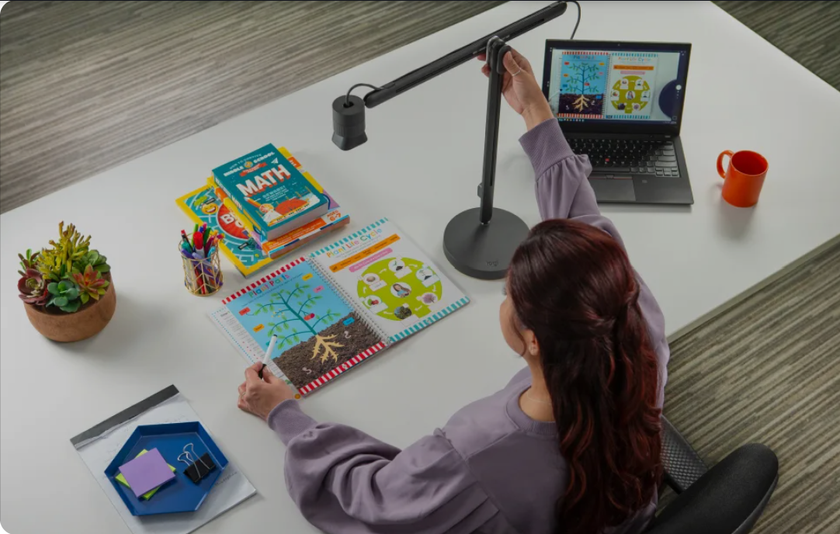T&L News(142)
Week of: August 18, 2008
- Put to the Test:
T&L Reviewer Carol Holzberg Test Drives Microsoft Expression Studio 2 - Imagination without Borders
This July, 370 students from 61 countries and regions met in Paris, France, as finalists in the 2008 Imagine Cup, a technology contest that showcases youth solving real-world problems with creativity, passion, and innovation. Throughout the week-long event, sponsored by Microsoft, 124 finalist teams presented their responses to this year's theme, "Imagine a world where technology enables a sustainable environment." - Building EPortfolios
Slowly your classroom fills with a sea of unfamiliar young faces. The first day of school always poses challenges, but this year is different. You call on a boy in the front row and ask his name. Scanning your list of notes for a "Robert Harris," you smile, asking if he returned to the Mediterranean this summer. He glances up with a look of wonder and returns your smile. Instant connection! All thanks to Robert's ePortfolio, shared by his last teacher and filled with seaside watercolors of his grandparent's Costa del Sol home. - Leader of the Year Profile
Leader: Cory Boggs, Curriculum Integration Specialist, Putnam City Schools, Oklahoma City, Okla. District Snapshot: 18,530-student district with 18 elementary schools, five middle schools, and three high schools. - BACK OFFICE BUSINESS
In 1999, Doug Harriman, then principal of Seminole Elementary, set out to find a program to help ESL, bilingual, and special education students. After seeing Scientific Learning's Fast ForWord software at a conference, Harriman decided to try it.
- $110 Educational pricing for Expression Studio through CCV Software
- Web 2, Blend 2, Media 2 and Encoder 2 can be purchased separately; Design 2 is only available as part of Expression Studio.
Description:
- Primarily Windows-based suite of high-end Web design tools, including:
- Installation requires Microsoft .NET Framework 3.5 (if it is not already installed, it will be installed automatically during setup); Windows XP with SP2 or Vista; 1 GHz or faster processor; 2 GB or more hard drive space; 1024 x 768 or higher resolution and a DVD-ROM drive
- Full install consumes nearly 1 GB (2 GB required for installation)
Since the suite's flagship product is Expression Web 2, this review focuses on that application.
Please list your positive impressions about the product.
- Suite of products that work together to produce engaging, interactive Web sites.
- Suitable for advanced Web design classes in high school. The Expression Web 2 interface, not only sports a conventional program menu and button-rich toolbar, it also includes six commonly used Task Panes visible in 4 windows down the left and right sides of the WYSIWYG editing window. These are: Folder list and Properties (Tag and CSS) at the left; Toolbox and CSS (Apply and Manage) at the right [See Web2interface.jpg]. You can customize which Task Panes display by selecting items from the Task Pane drop down menu. You can also move Task Panes to new locations by dragging and dropping them. Expression Web remembers the arrangement you've selected.
- The graphical editor (Design Mode) lets you see how your page will look as you build it, but you can switch to Code view if you want to adjust specifics or go the Split view route to edit in both modes simultaneously.
- Web editor checks spelling as you type (red squiggle underlines for errors)
- Includes several great-looking Web site and page templates (XHTML and CSS compliant) to help users get started. For example, if you choose the Organization template (think District or School Web site), you can customize ready-made pages for Home, About, News Calendar, Photo Gallery. Links, FAQ, and Contact.
- Expression Web 2 lets you insert Flash (SWF) and Windows Media files (WMA) into your Web pages. If you insert a Flash file in Design view, you can preview that file right in the WYSIWYG editor without opening a browser. Simply right-click the inserted SWF file and click Play Movie in Flash Format.
- Support for Photoshop (PSD) files, enabling users to import artwork created in Adobe Photoshop with full control over image layers. Once imported, you can generate a Web optimized .gif, .png, or .jpeg from the file. If you modify the original .psd image, you do not have to repeat the import process, simply right-click the image generated with Web Expression 2, then select Update from Source.
- Support for PHP (scripts that you can embed in HTML code to create dynamic, interactive Web pages) and PHP Preview right from your preferred Web browser without having to install a separate development server or having to upload the Web site to a server.
- Accessibility checker to ensure that Web sites designed with Expression Studio 2 can meet screen reader accessibility standards as well as WCAG (Web Content Accessibility Guidelines, http://www.w3.org/TR/WCAG20/)
Please list your negative impressions about the product (if any).
- Microsoft Expression Web 2 does not work on Macintosh.
- Pages created using Dynamic templates do not work with Safari.
How would this product be useful in the classroom/school? Please give specifics.
- I was hoping for a FrontPage replacement that might work in upper elementary/middle school. Expression Studio 2 may be too advanced for younger grades. There is a document titled "Learning Guide for Expression Web" available at here. The companion "Your Learning Guide to Expression Web Tutorial" can be downloaded from here. The curriculum and its companion tutorial are geared to high school students interested in learning the basics of Web design. Both require about 10-15 hours of class time to complete. Plus there are several instructor-led tutorials, hands-on self-study tutorials, starter kits with pre-built assets, and training videos available at the Learn Microsoft Expression web site. It is possible that students in grades 5-8 could also work through the sample curriculum to strengthen their Web design skills. But you would need to allow more time for instruction.
What problems might you have using this in a classroom/school?
Tech & Learning Newsletter
Tools and ideas to transform education. Sign up below.
- This is a suite of products with 5 full-featured applications that work together to produce content-rich Web site/page. Each one requires instruction. Mastery will take time.
- Only Expression Media 2 is available for Macintosh. All the other suite applications work only on PC.
Is the product a good value?
- Academic pricing is excellent (compared to the retail price and the academic price of Adobe's CS3 Web Design suite which is more expensive).
- Microsoft Expression web site has tutorials and other useful resources which teachers will find very helpful.
Would you buy this for your school?
- No, we've already standardized on Dreamweaver and Adobe's products.
- Plus one school in our District has only Macintosh (with no Boot Camp or Parallels option). If we standardize on anything other than Dreamweaver, some students would have to master applications in both suites if they changed schools.
Would you recommend it to other educators and administrators?
- Yes, but only if they haven't already standardized on Dreamweaver/Adobe or their Schools/Districts have no Macintosh computers. If their Macs run Parallels or Boot Camp for use with Windows, then Expression Studio 2 would also work.
Why or why not?
- I would recommend it (with reservation) for PC-only (or dual Mac/Windows boot) environments
- It's less expensive than Adobe Dreamweaver
- It has Web page/site templates to get you started
- It is robust enough to support both ASP.NET 3.5 and PHP, as well as Web standards such as XHTML (eXtensible Hypertext Markup Language), CSS (Cascading Style Sheets), XML (eXtended Markup Language) and XSLT (eXtensible Stylesheet Language Transformations)
About the Author: Carol S. Holzberg, PhD, cholzberg@gmail.com, (Shutesbury, Massachusetts) is an educational technology specialist and anthropologist who writes for several publications. She works as District Technology Coordinator for Greenfield Public Schools and the Greenfield Center School (Greenfield, Massachusetts) and teaches in both the Licensure program at Hampshire Educational Collaborative (Northampton, MA) and online in the School of Education at Capella University. Send comments or queries via email to: cholzberg@gmail.com
Imagination without Borders
By Lindsay Oishi
This July, 370 students from 61 countries and regions met in Paris, France, as finalists in the 2008 Imagine Cup, a technology contest that showcases youth solving real-world problems with creativity, passion, and innovation. Throughout the week-long event, sponsored by Microsoft, 124 finalist teams presented their responses to this year's theme, "Imagine a world where technology enables a sustainable environment."
Although the contest is open to all students aged 16 and older, few high school contestants could outdo the college and graduate students who made up most of the 200,000 participants. Sixteen-year-old Anthony Platanios of Greece, however, was exceptional. Not only was he the youngest finalist, but he also designed, produced, and presented his project entirely by himself. Competing in the Software Design invitational, he presented a multifarious network of software, sensor, mobile, and Web components that intelligently monitor stet and stethome consumption of energy, water, and oil.
The eight other invitationals were Embedded Development, Game Development, "Project Hoshimi" (Programming Battle), IT Challenge, Algorithm, Photography, Short Film, and Interface Design. Along with five Achievement Awards in areas such as Rural Innovation and Accessible Technology, these categories offered more than $240,000 in cash prizes. More on the winners at http://imaginecup.com/about/news.aspx.
Plantanios says that the Imagine Cup was one of the greatest experiences of his life, even though he did not win. He especially valued the rare multicultural opportunities that the global contest offered. "I learned about many cultures that I didn't even know existed, and I heard many languages that I've never heard before," he says.
Edward Granger-Haap, CIO of the international non-profit Save the Children, attended the event as a judge and says that these contests are incredibly important for getting young people engaged with technology. "In the US alone, we have 190,000+ tech job openings per year, with only 80,000+ technology-related college graduates," he says. With this labor crisis, prestigious competitions like the Imagine Cup are critical to convincing teens that technology is a worthwhile pursuit.
To get the creative juices flowing, students can check out the Web site at www.imaginecup.com, and start tinkering with key Microsoft products showcased at the Imagine Cup, such as Windows Live, Windows Embedded CE, and XNA Game Studio Express. They shouldn't be discouraged by the fierce competition. Just entering the contest builds skills in teamwork, problem solving, and entrepreneurship.
So get started now! Next year's topic is "Imagine a world where technology helps solve the toughest problems facing us today." These problems are based on the United Nations' eight millennium development goals (/).The 2009 event will include projects in robotics and a new category, "Mashup," which challenges participants to combine multiple media to reveal insights into the world's most serious challenges. To succeed in this competition, judge Granger-Haap says, "Imagine, imagine, imagine. Dream about making incredibly interesting things without limitations."
Building EPortfolios
By Sascha Zuger
Slowly your classroom fills with a sea of unfamiliar young faces. The first day of school always poses challenges, but this year is different. You call on a boy in the front row and ask his name. Scanning your list of notes for a "Robert Harris," you smile, asking if he returned to the Mediterranean this summer. He glances up with a look of wonder and returns your smile. Instant connection! All thanks to Robert's ePortfolio, shared by his last teacher and filled with seaside watercolors of his grandparent's Costa del Sol home.
Tech-using educators know the many benefits of ePortfolios. They help get a handle on kids' interests, difficulties, and strengths. Techno-loving student thrive on the real-time interaction. Administrators like that ePortfolios record student progress digitally, making a convenient shared resource between students, parents, and other teachers.
Tech-using educators know the many benefits of ePortfolios. They help get a handle on kids' interests, difficulties, and strengths. Techno-loving student thrive on the real-time interaction. Administrators like that ePortfolios record student progress digitally, making a convenient shared resource between students, parents, and other teachers.
Graphic arts and animation are obvious fodder for ePortfolios. However, teachers across the country also motivate kids through traditional subjects, such as math and reading, by creatively adapting ePortfolios in their classrooms. Here is a sampling of these innovative programs.
ADDING UP TO SUCCESS
Palie Cantu of the Forest Ridge School of the Sacred Heart, in Bellevue, WA, noticed a recurring issue with her middle school math students. "They just weren't using the paper space needed to work through the problems in an organized manner," says Cantu. Trying to cram scribbles of calculations onto one sheet of paper resulted in careless mistakes that had little to do with the student's understanding of the subject.
Palie used Forest Ridge's one-to-one program to create an interactive environment. Cantu e-mailed a "problem of the week," chatted the kids through confusion with audio-accompanied graphic files, and supported vacationing students through distance learning.
Cantu recognized the benefit of the electronic progress report these actions naturally created. Then she decided to take it one step further. "I chose this year to have my 5th, 6th, and 7th grade math classes create an ePortfolio by using Microsoft OneNote 2007," says Cantu. "OneNote 2007 helps my students keep their work organized and helps me keep track of their progress. It also supports a paperless learning environment.
"Finding new ways to use technology led to new ways to learn," says Cantu. "I would choose one student each session to be in charge of creating notes for the lesson." This ensured students actively listened and digested the information.
Parent-teacher conferences became a breeze. Cantu simply pulled up the ePortfolio, pointed out the problems when and where they occurred, and devised a cohesive plan with parents to correct the issues. Cantu hopes to create a system of ePortfolio sharing between teachers to ease transition years.
MUSIC TO THEIR EARS
Escondido teachers create iTunes playlists to track student reading progress.
Most students stash their IPods or Nanos with a groan at the start of each class. In some classrooms in the Escondido Union School District K-8, students do just the opposite as part of the iRead program. "The iPod and iTunes were obviously created for music enjoyment," says Kathy Shirley, Director of Technology and Media Services for Escondido. "We have taken a consumer technology and used it in a way that is was not intended, but works beautifully in education for assessing reading fluency."
Shirley created a unique program using the iPod classic and nano, along with a third-party Belkin voice recorder, to record student reading fluency and comprehension practice. The student reads the passage into the recorder. The captured voice memo files, when synced with iTunes, are transferred to the Voice Memos playlist in iTunes to create a digital record, or ePortfolio, of their progress. "We have targeted our reading intervention classes, which contain students who are at least two grade levels below their current grade in reading, primarily due to learning English as a second language," says Shirley. "We must help these students achieve at a 'normal' pace, but if they are ever to catch up to grade level, their progress must be accelerated."
Escondido data studies indicate the iRead program a success, showing 2-4 times higher student fluency and accuracy gains in classrooms using the iPod. Second language learners benefit greatly as the opportunity to hear native speakers allows students to practice correct pronunciation of troublesome words.
"The device is incredibly motivating to struggling readers and provides immediate feedback—they can replay their recordings and self-reflect on their own progress. One of the most challenging aspects of improving reading is giving the struggling reader an objective view of herself. The iPod acts as a mirror for self-correction."
Teachers can even use ID3 tags as "information containers" to imbed comments, directions, and assessments directly into each student's voice memo files. These completed files form Smart Playlists, or the ePortfolio, which can then be shared with the student, parents, and other teachers.
ANIMATED TEACHING
When Daniel Cornell relocated to Colorado, he left behind a position as tech administrator but regained his passion for teaching in the classroom by taking over computer classes in a Denver public middle school. Seeing a dearth of game design, video editing, or animation offerings in the curriculum, he created his own.
Cornell brought his philosophy of "let's open limits and see how far they can take it" to the program. "They were intrinsically motivated by their own interests," says Cornell. "It created a system of perpetual learning." A student determined to create billiard-table animation came for advice on angles and left with a smile and Cornell's old trig book.
Denver students use HP computers to create custom ePortfolios.
Four years ago, Cornell took over as Digital- Evolutions Program Director and Teacher at the Smoky Hill High School in nearby Cherry Creek School District. Knowing a static listing of skills on a resume would do little to impress prospective design colleges or animation houses, he incorporated the creation of ePortfolios into the course. Showcasing work would be an important step to future academic and professional success and he would give his students years of practice to perfect the art.
"Demo reels, or ePortfolios, tend to be the culminating project for all of my classes," says Cornell. "I feel that [I am] prepping them to create their most important demo reel; the reel that will get them their first job."
Cornell's first students graduated this year and proved his point. ePortfolios netted success in the form of national awards, rare paid graphic art internships, and assistant positions to animators for national outlets like Fox and Nickelodeon. Major industries offer exclusive interviews based on the impressive ePortfolios, only to be stunned to see a teenager walk into the boardroom.
Though he recognizes the lure of a position in the field, "I always emphasize the importance of education," says Cornell. The country's most respected art and design colleges approach Cornell to woo his talented students. So far, every graduating student received a scholarship to their choice of the prestigious programs, thanks to the most impressive portion of their application—their ePortfolio.
Sascha Zuger is a freelancer, public radio commentator, and author of Girl Overboard, a young adult novel, under the pseudonym Aimee Ferris.
What They Used to Build Eportfolios
ADOBE
Adobe Acrobat
Adobe Creative Suite
Adobe Photoshop
Adobe Illustrator
ANGEL LEARNING
ANGEL ePortfolio 2.1
APPLE
I-Tunes
AUTODESK
Autodesk Maya
BELKIN
Belkin Voice Recorder
DAZ 3D
Bryce
MICROSOFT
OneNote 2007
VECTORWORKS
Vectorworks Designer
Leader of the Year Profile
By T&L Editors
Leader: Cory Boggs, Curriculum Integration Specialist, Putnam City Schools, Oklahoma City, Okla.
District Snapshot: 18,530-student district with18 elementary schools, five middle schools, and three high schools.
Cory Boggs remembers the exact moment when he fell in love with technology.
"My sixth grade teacher, Mr. Theis, unboxed four brand new Apple IIes," he says. "I was so pumped. I came in during lunch almost daily just for the opportunity to write my stories and draw pictures on the computer."
These days, Boggs draws on that early, exhilarating experience. As the curriculum integration specialist for the Putnam City Schools (PCS) in Oklahoma, his goal is to imbue others with the same intellectual and creative engagement he found—and still finds—when he uses technology.
In 1997, Boggs began working as a fifth-grade teacher in the district, where one of his earliest coups was talking his principal into purchasing a classroom set of AlphaSmarts. The portable word processors had an immediate effect on his students.
"They wrote and wrote," he says. "When it was time to print their final versions, they stood by the printer amazed at how much they had written."
Today, Boggs oversees instructional technology in the district's 28 school sites. In this role, Boggs combines the big picture and the nitty-gritty, for both technology and pedagogy.
One striking example of these elements coming together is the district Intranet, which Boggs helped to build and now maintains daily. The Intranet, also known as .PC, has become the district's central hub for accessing e-mail, calendars, teacher Web sites, and network files. It also enables important administrative tasks. For example, teachers can schedule absences, request a substitute, and sign up for professional development.
At the heart of .PC are the online learning communities. Teachers across the district can join different forums—from secondary math to special education—in which they exchange advice and share favorite resources.
Boggs has a knack for streamlining systems. In 2005, Boggs designed changes to the district's financial system that automated how purchase orders are entered, tracked, and approved. A process that used to be stretched out over several weeks now takes just a few minutes.
"He has an innate ability to take a concept that perhaps has been a manual administrative process in the past, apply technology, and the result will be a new and more efficient way of carrying out a task," says Bettie Estes-Rickner, PCS executive director of information technology services.
Professional development is another area where Boggs has made inroads. He developed Advanced Integration Training (AIT), a course that trains teachers to integrate technology into the curriculum in inventive ways. Modeled after Intel's Teacher to the Future program, the 27-hour course rewards participants with district-owned laptops. To date, 400 teachers have graduated from AIT.
"We have noticed our teachers have moved from the 'how to' training to 'how do I integrate technology into my curriculum to engage my students' training,'" says Boggs. Given Boggs' contributions, it comes as no surprise that his colleagues hold him in high regard.
"A district that once had several schools on the school improvement list now has zero on that list, in part, due to availability of technological resources initiated by Mr. Boggs," says Jason Simeroth, PCS executive director of curriculum and instruction.
Steve Lindley, PCS director of communications, says, "Cory is, in my mind, the heart and soul of technology in our district."
Learn more about Putnam City Schools at: www.putnamcityschools.org
LAST BYTE: "WHAT EXCITES ME IS SEEING EYES LIGHT UP AND STUDENTS FILL WITH PRIDE WHEN THEY SHOW ME WHAT THEY HAVE CREATED...WHAT THEY ARE DOING IS SIGNIFICANT. THEY ARE SIGNIFICANT."
BACK OFFICE BUSINESS
Raising Test Scores and Self-Esteem
In 1999, Doug Harriman, then principal of Seminole Elementary, set out to find a program to help ESL, bilingual, and special education students. After seeing Scientific Learning's Fast ForWord software at a conference, Harriman decided to try it. Since implementing the Fast ForWord program, students have achieved steady gains on the Texas Assessment of Knowledge and Skills (TAKS). From 2003 to 2007, the percentage of fourth graders passing the TAKS increased from 88 %to 91%, and the percentage of fifth graders passing the TAKS increased from 89 %to 96%.
Keeping Networks Secure
When the Central Catholic High School in Lawrence, MA, installed eSoft's InstaGate firewall gateway to provide email and protected Internet access, it soon became evident more security features were needed. The school added two ThreatWall Security Gateways with Web ThreatPak capabilities. Their network is now protected against spyware, phishing, browser exploits, viruses, and other malicious Internet content. Administrators can block access to Web sites with pornography, nudity, and other mature content. Jodi Linnehan Kriner, Director of Technology with the school, finds the security software user friendly. "If you want to make changes or run reports, you simply log on and go," she says.
Enhancing Learning with Video Streaming
Volusia County Schools, Deland, FL awarded a 3-year content license agreement to Library Video Company's SAFARI Montage system to equip all of its 76 school sites with SAFARI Montage WAN Manager, the video-on-demand and digital media management enterprise system. Bill Tindall, Executive Director of Technology, says the school plans to use the ITV video streaming, teleconferencing, and media management capabilities. He says, "we have been building the infrastructure to support these capabilities, and these products are almost perfectly aligned with our vision of delivering and managing video throughout the district."











